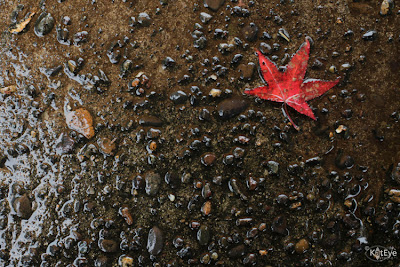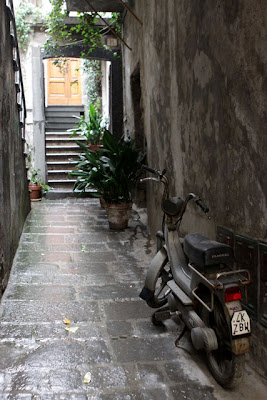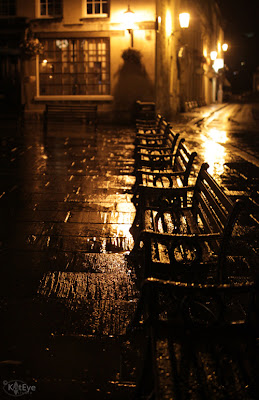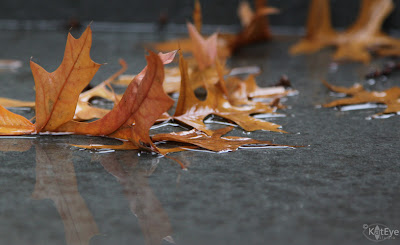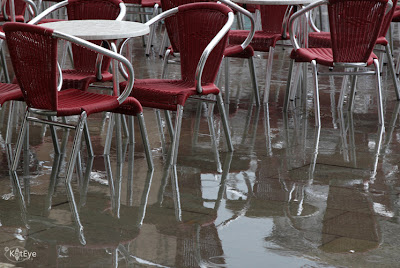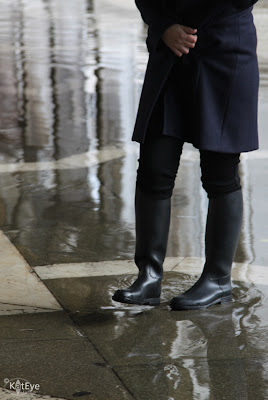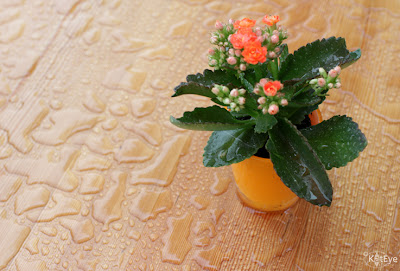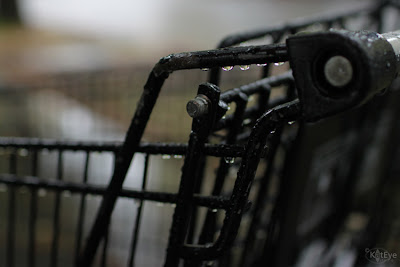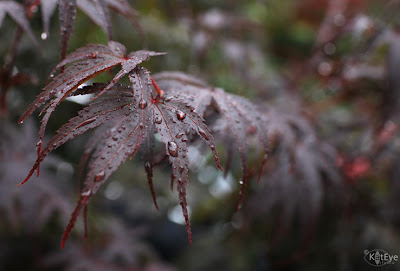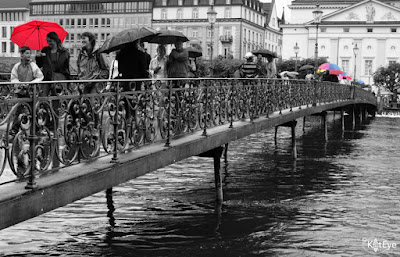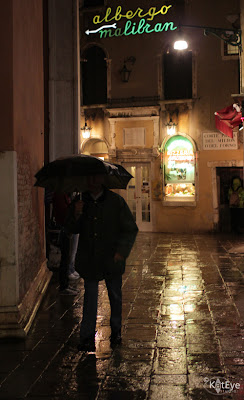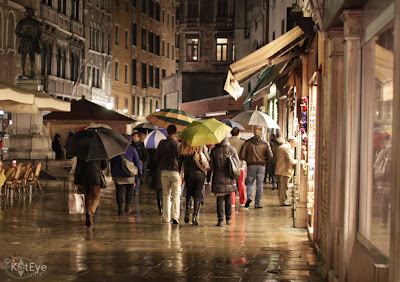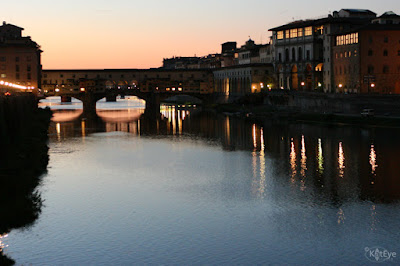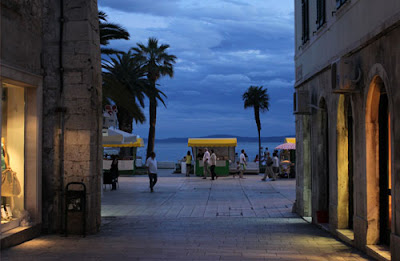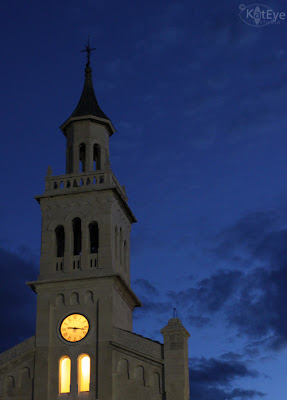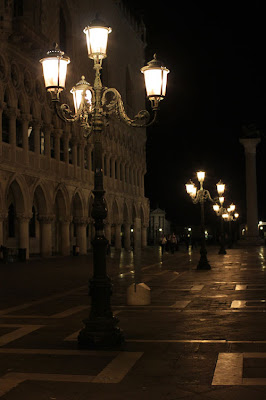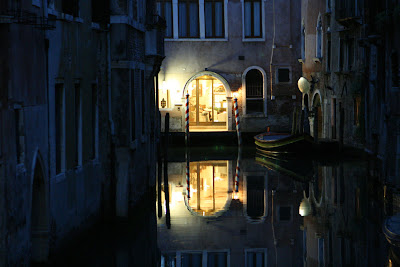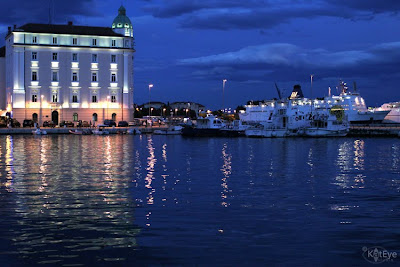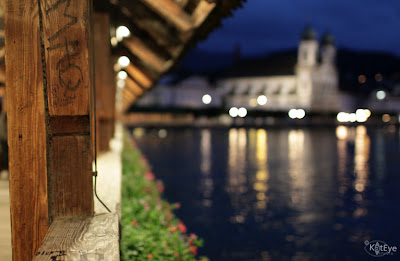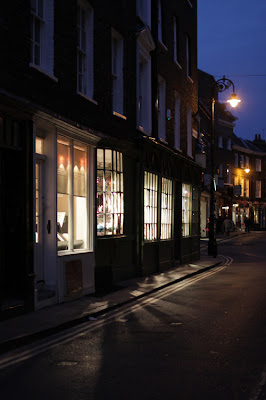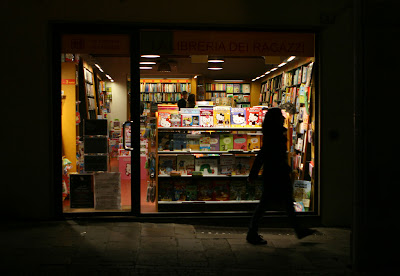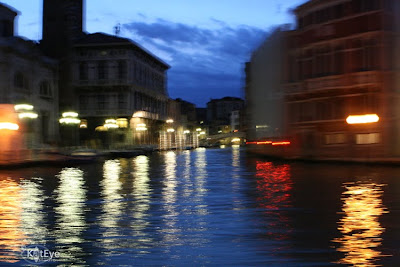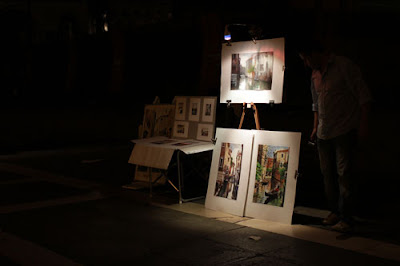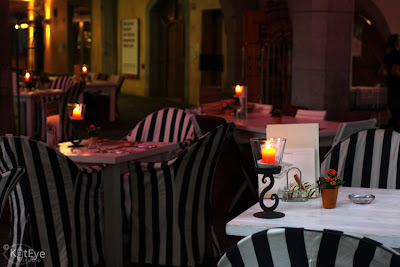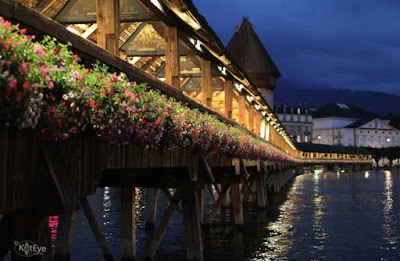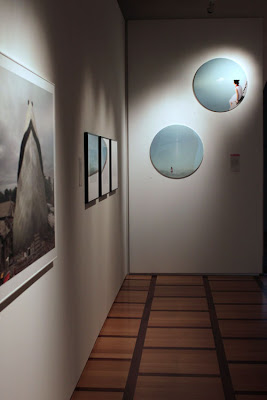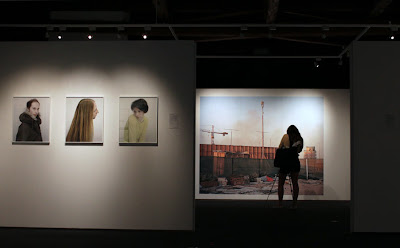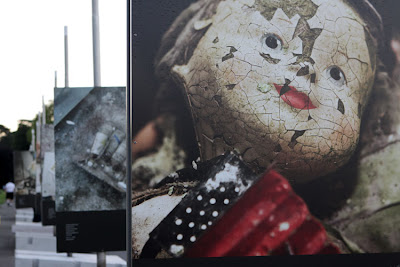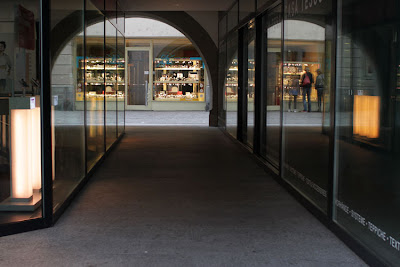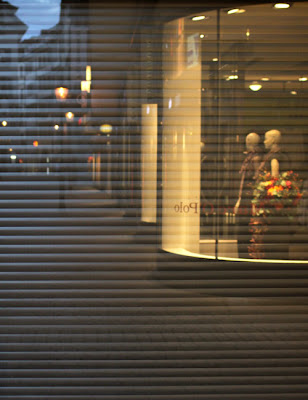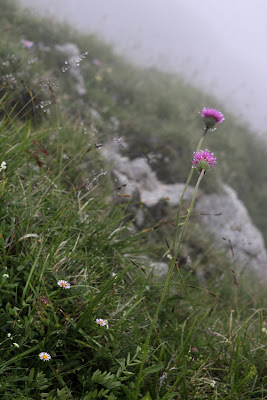Not only is the light reflected, but you can great image reflections as well with a smooth surface or a puddle. The thin layer of water on this smooth concrete makes a wonderful mirror for the leaves on the ground.
This puddle in Piazza San Marco in Venice serves to reflect the geometry of the famous tables and chairs, making a more interesting composition than the tables and chairs alone.
And while we’re talking about puddles, how about capturing some splashing through them? Of course, this image is a bit more sedate than most puddle-splashing pictures, a capture of Italian rain fashion more than splashing but you get the idea. The movement of water in the puddle along with the reflections makes the photo more than just photo of rainboots.
Out in the rain, look for ways the water moves across and off surfaces. This restaurant table was so highly polished that the rain water beaded up into interesting shapes, a nice backdrop for the flowers.
Look for the drips ready to fall…
Look for the drops that grace the leaves.
It’s also fun to capture people in the rain. They are more “anonymous” with their hoods and umbrellas, hunched up and hurrying along. I like to capture groups of colorful umbrellas, as on this bridge in Lucerne, Switzerland.
Or the lone traveller, trying to get someplace at night in Venice. People with umbrellas are quite the artistic staple, if you look at paintings through history.
Here we have quite a few different elements that I love in one rainy shot… umbrellas, multiple reflections, at night, and it’s Venice. How could you go wrong?
There are so many ways I have yet to capture the rain, these are the images I’m still looking for:
- Looking out of a window covered in raindrops. Focus on the drops, with the scenery out of focus behind.
- Rain spilling out of our very cool dragon-shaped rainspout or off the edges of eaves.
- The rain in a downpour – I want to figure out how to capture the “look” of the world when you look through rain.
- Drops of rain splashing in puddles – oh those perfect, rippling circles just tantalize me!
So, how do you do shoot in the rain without ruining your camera? Here are a few tips:
- Use an umbrella. If you have someone along with you, ask them to hold it over you and your camera when you shoot. If you don’t have that option (or don’t want to ask your companions to hold your umbrella every 15 seconds), a bigger umbrella works better than a small one for this “solo” technique: Rest the handle between your neck and shoulder with the umbrella resting on the top of your head. This will enable both hands to be free and your camera to be covered while you shoot. It does take some practice though!
- Find sheltering spots. Store awnings and overhangs, doorways, under trees, etc. can be great places to pause and have a little bit of protection from the rain while you shoot. Watch out under trees though – the drops might be less frequent but they are often bigger!
- Keep your camera protected between shots. Work out a system that enables you to quickly and easily but your camera in and out of your bag. I carry my camera across my body, and my camera bag the same way. I can take my camera in and out of my bag easily, so when it’s rainy I can put it away between shots but easily get it out for the next one. Another thing I will sometimes do, especially when it’s light rain, is just tuck the camera between my body and the bag. It’s mostly protected but easily accessible. When it’s heavier rain though, I keep it in the bag!
- Use a camera cover. You can buy rain covers for your camera, but I’ve found them to be kind of pricey and I don’t want something bulky I have to carry around “just in case” it rains. Another practically free alternative for an SLR camera is to use a plastic grocery bag (you know, the ones you get in just about any grocery store) and a rubber band. Tear a hole at the bottom of the bag near one corner, this is where you put the lens looking out. Use the rubber band to secure the bag at the end of your lens, then just wrap the bag up around the camera with the handles coming around the back. When you want to shoot, just open up the handles and hold the camera as normal inside the bag. It might look weird, but it’s cheap and easy, and a spare bag wrapped up with a rubber band does not take up much space in your camera bag.
- Don’t worry about a few drops of water on your camera. I don’t. A few drops on my equipment have never hurt anything – I just make sure that it doesn’t get completely wet. By keeping the camera mostly protected in the ways I’ve described above, my equipment has remained in good working order even if I shoot in rainy weather. Keep something soft and dry handy to wipe off the lens though, you will experience drips now and again!
Whatever you do – don’t just put the camera away when the clouds start rolling in. Enjoy the different photo opportunities that the rain provides.
Remember this motto – “When life gives you rain, take photos anyway!”
